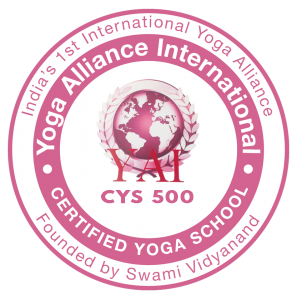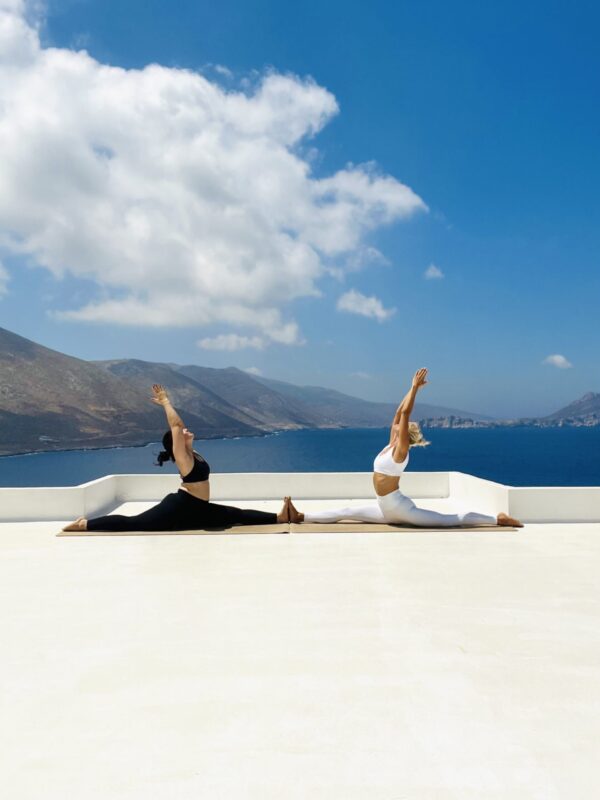Information


Asana practice is perhaps the most commonly known forms of yoga worldwide from the whole yoga philosophy. It is part of the Raja yoga path by Sage Patanjali, as the third limb amongst the eight. Although asana practice is a powerful tool we have available in our life, the way we practice it matters.
Our intention when we step on the mat plays a key role in our practice. These days, many are more focused on performing asanas instead of developing a steady foundation for the body and mind. We want to keep moving, to use the asanas as a means of getting fit and in shape, resisting the essence of the practice, which is about stillness and awareness. We rush to do a more anatomically complex asana, just to prove to ourselves that we can do it or to take a photo and share with the world our physical abilities, ignoring the true purpose of the postures, which is to develop strength and flexibility, so that we can be still and get mental clarity.
I mention the above because I also went through these stages throughout my yoga journey. And as a teacher, I often see these in my students but I also see the shift in their approach once I teach them the philosophy.
I was blessed enough early on in my yoga journey with amazing teachers who brought me the true meaning of the asana practice. I remember a time when I asked one of my teachers to help me with a specific asana I was trying to “master”. She immediately said no and told me to never ask again for an asana. I remember being so annoyed and upset. In that moment, I couldn’t believe it. I was thinking “how can this be, this is my teacher, why is she not teaching me?”.
But I respect my teachers so I trusted there was a reason for this. Indeed there was and with a little time, I understood it. She said no not because I couldn’t do it, or because she didn’t believe in me or that she didn’t want to help me. She said no so that I learn to be humble on the mat and allow my practice to unfold naturally. My desire to do this anatomically advanced asana was simply my ego trying to get a boost and validation. To this day, this has been one of the best lessons a teacher ever gave me and I gained even more respect for her. She is still my teacher and one of the most authentic yoga teachers I have ever met. I have also never asked for an asana again nor I have the desire to.
I learned the philosophy and continued to remain focused on this. The philosophy is the root of the practice and it is what takes it from a physical practice to a sadhana, a spiritual practice.

The wisdom of it is not what happens externally, but what is experienced internally through awareness and concentration. We can have a level of perfection in doing the postures if we have a natural strength and flexibility tendency. But does this really matter?
Does this make us better humans?
Are we more compassionate if we can hold an arm balance for a prolonged period of time?
Do we become more patient by pushing ourselves through a sweaty Vinyasa flow?
Do we heal and learn to forgive by doing a handstand?
And most importantly, does our asana practice help us get closer to who we really are?
These are all questions of self-enquiry to contemplate upon from time to time. Whatever you answer is, this reveals the meaning of your practice currently. Then you can understand if it is taking you to a higher level of knowledge or if you need to adjust it so that it is not an ego based practice. There is no right or wrong, it is a reflective process to give you clarity on how you are using your practice.
At some point, we will age, our bodies will become more frail and our minds more forgetful. What will we do then if our attitude to our practice is about external pleasure instead of internal calm and steadiness…
Perhaps the most important taking from this is to learn that your practice is personal. Hatha Yoga Pradipika, one of the first and most important Hatha Yoga texts teaches us this when mentioning that our practice should be kept private between our physical form and true Self and with the guidance of our teacher. Then there is no need to prove anything, it is a means of unfolding through the layers of the body and mind to go inwards, to learn and to focus.
Focus more on being present on the mat, rather than endlessly trying to master an asana.
Focus on finding a good teacher that can lead you on your yoga path, who you trust and respect.
Focus on learning to breathe correctly, on practicing pranayama, on training your mind to concentrate.

There is a reason why asana practice is not part of the highest forms of spiritual practices in the Ashtanga eightfold path, although it is indeed an important aspect as are all of the eight limbs. My understanding of this is that aside from developing the physical purification, strength and flexibility which are indeed essential, through it we will also learn to shift our attention internally and not give into our ego. Then naturally pratyahara (sense withdrawal), dharana (concentration) and dhyana (meditation) naturally come. When we truly learn this, perhaps self-realisation is closer to attain.
Until then, practice with joy, with respect for the practice and for your teachers, with self-belief and humbleness. It is not a competition on how good we can be in the asanas, this does not exist in the practice. It is about the teachings that unfold through the process of willingly working with the body and mind to reach a harmonious and balanced state.